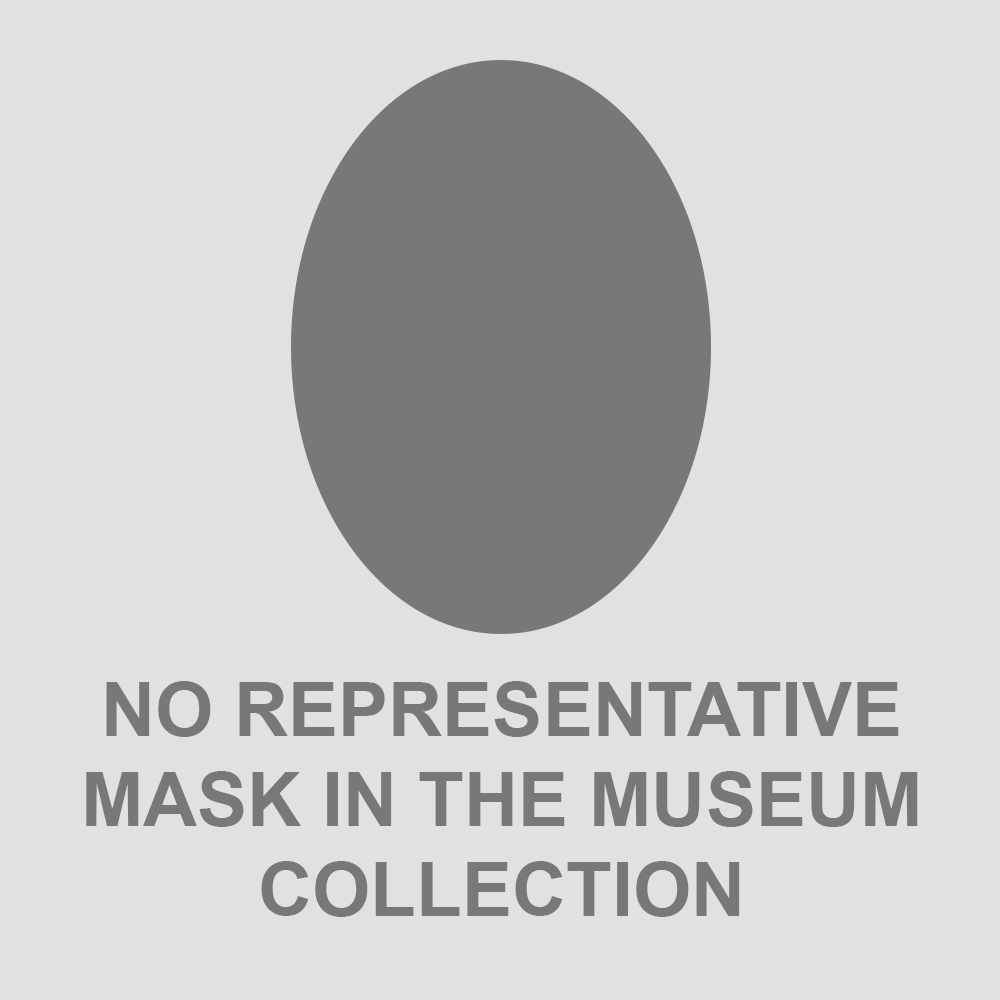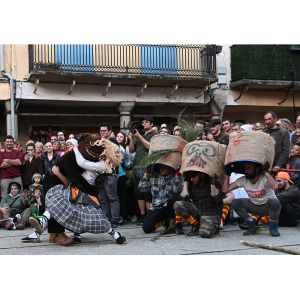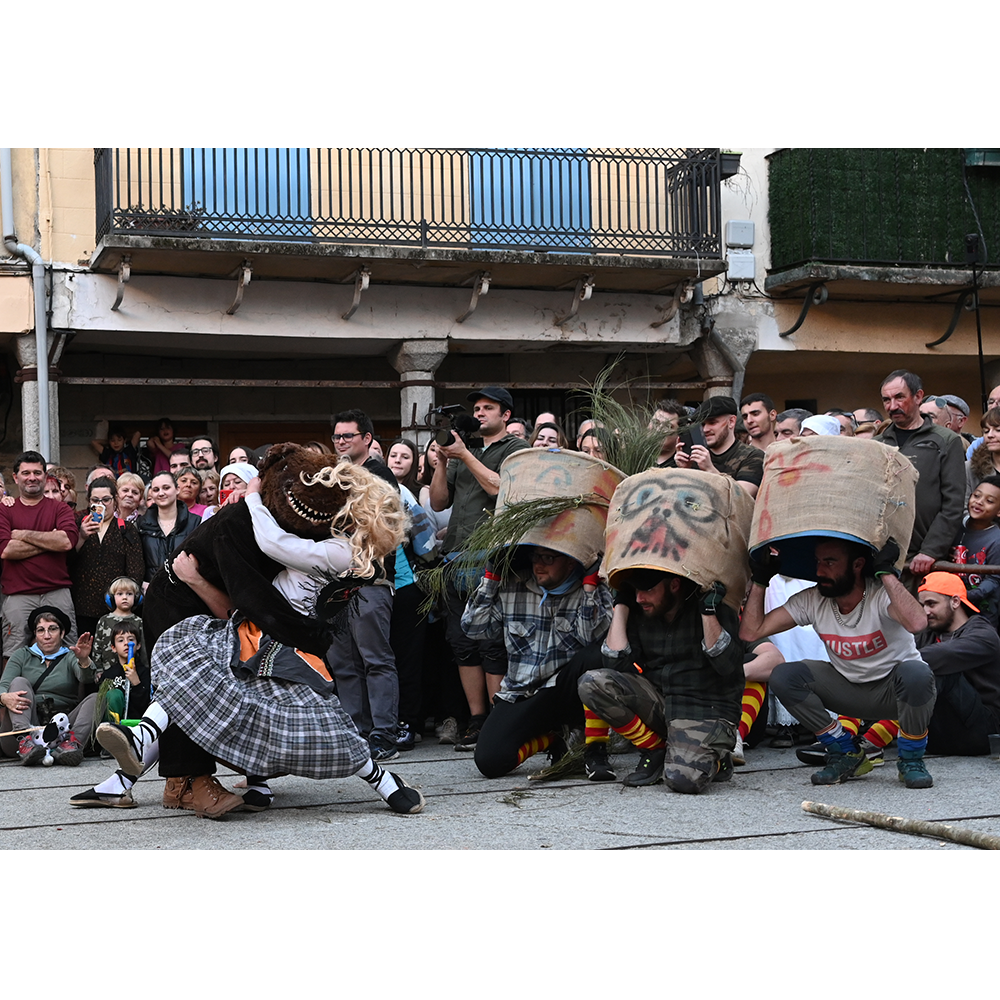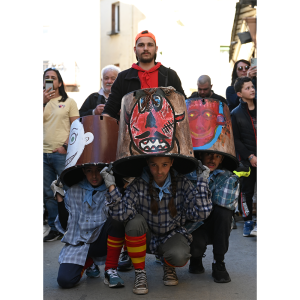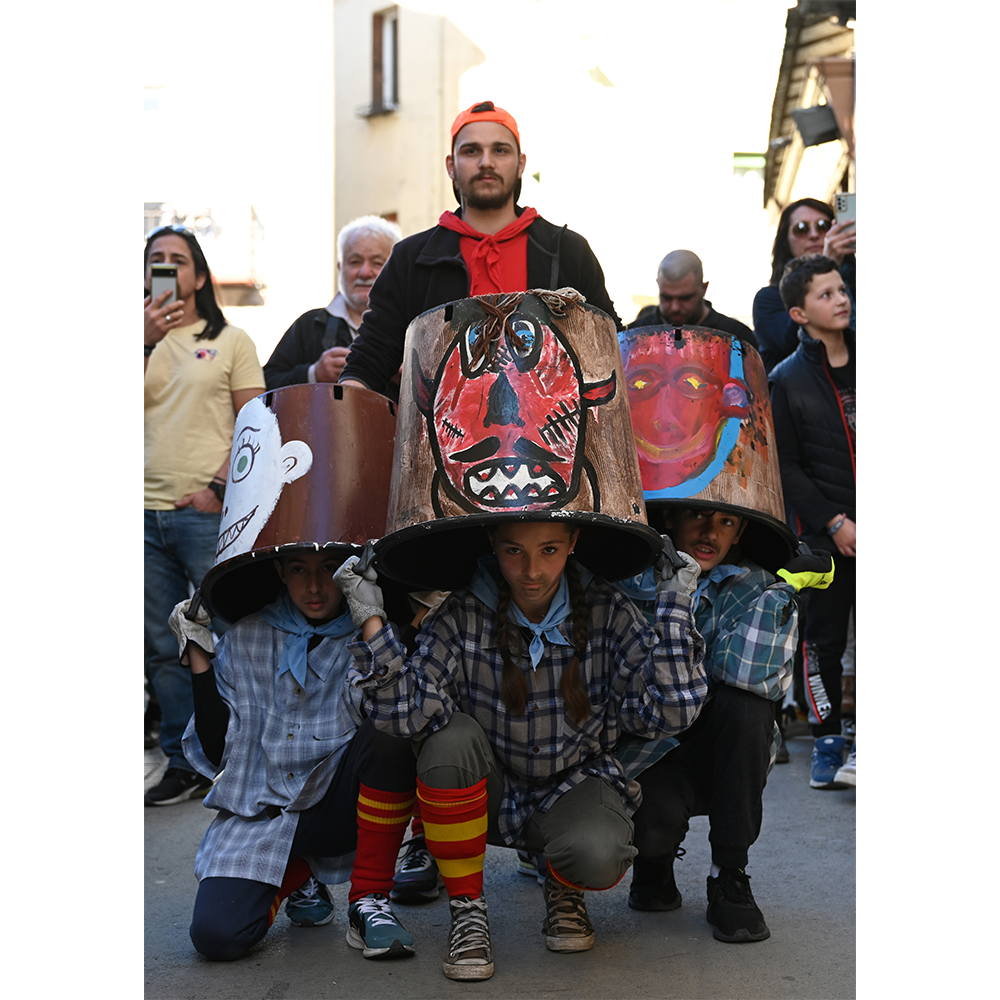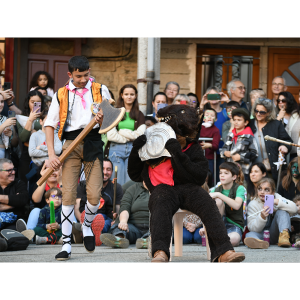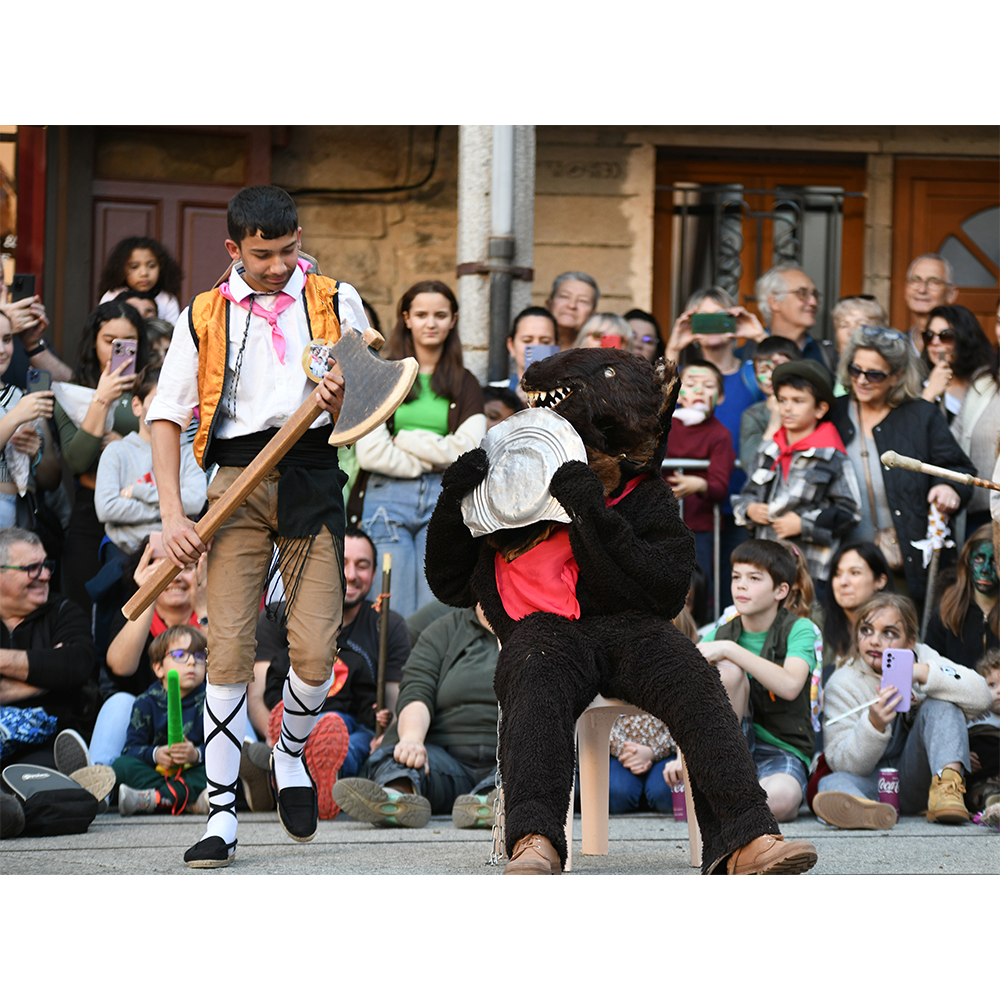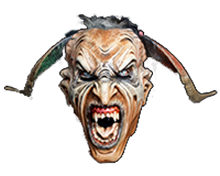TITLE: Bear Mask
TYPE: helmet mask
GENERAL REGION: Europe
COUNTRY: France
SUBREGION: Pyrénées-Orientales
ETHNICITY: French Catalonian
DESCRIPTION: Fur l’ours (bear) mask
CATALOG ID: N/A
MAKER: N/A
CEREMONY: Fête de l’Ours (Bear Festival)
FUNCTION: Adult initiation; entertainment; protection/purification
AGE: N/A
MAIN MATERIAL: goat fur and skin
OTHER MATERIALS: N/A
The Eastern Pyrenees region of France shares with Andorra a cultural tradition known as the Fête de l’Ours (or Festa de l’Ós in Catalonian). The festival is actually a pair of satirical plays regarding a bear. The specific form of this festival is unique to Catalonian France and Andorra, where it varies from town to town. In only a few places is the bear a masked character. On the first day is the children’s version known as the Fête de l’Ós Petit, or Festival of the Little Bear. Both bear festivals have a similar sequence, with minor variations. The Bear Festivals begin with the trapper and his wife, Roseta or Rosette (played by a young man in drag) traveling through the village, clowning as they go, accompanied by the townsfolk. At each stop, the trapper exhorts the local hunters to help him using a prepared speech, either in Catalán or French. “Courageous men,” he shouts, “the cruel bear is in the mountains; we can save ourselves if our hearts are noble!”
Roseta’s role is to attract the bear, named Martín, which according to local myth, periodically tries to abduct girls with concupiscent intent. After each speech, the trapper and Roseta dance in a circle to rally the hunters and townsfolk. In the Fête de l’Ours, this includes a female contingent of Amazons dressed in primitive garb, as well as washwomen in white. The Botes, or barrels, are strong villagers who hide under shells with painted faces to lure the bear forward. On the way through town chasing Roseta, Martín sometimes gets distracted and grabs at any young woman within reach. The trapper’s task is to refocus him on Roseta. In the town squares, the Botes join the Tortugues to help subdue the bear. Tortugues are dressed in white with white makeup, and are hidden in white cloth tubes. From the tubes, they try to distract the bear. Their lures of choice are canes with little stuffed bears or dolls on the ends.
Whenever the bear gets tired, Roseta tempts him and he pursues her anew, with the trapper always there to hinder him. These sequences occur several times in different town squares. After each, the group dances to the music of a live band accompanying them. Eventually, the trapper, Roseta, and the bear Martín find themselves on the balcony of a house known as Maison Bouzage, continuing their comedic antics, while the trapper discharges a rifle at the bear. When the hijinks go haywire, oursgence is there to save the day. Oursgence is an untranslatable pun deftly combining the French word for bear (ours) with the word for emergency medical team (urgence). They clown around and occasionally step in to help the characters when the antics miscarry. Throughout these sequences, a band accompanies the group and helps coordinate the action, using music as a signal.
When the group finally reaches the main square, the entire town surrounds them, and they prepare for the finale. A final round of trapping begins and eventually, the hunters wrestle the bear to the ground, and it is captured. To show his mastery of the bear, the trapper makes it do tricks and the bear, in turn, makes the trapper, or Roseta, or both do the same tricks, for comedic effect. Finally, the bear abducts a young woman he chooses from the crowd and takes her to his cave at the edge of the square. Oursgence carries the exhausted bear to a chair for the climax.
The implements for the shaving ritual are now prepared and “Amazons” and washwomen pass the time making merry. Eventually, Oursgence recovers the young woman and examines her. The bear emerges from the cave, shouting his characteristic “hou!” and is promptly shot by the trapper.
The shaving ritual begins with dances by the trapper and Roseta before the bear. He is dressed in a bib apron and given a shaving basin, with each dancing alternately to keep Martín distracted. Finally, they dance toward the bear with a large axe, to his evident distress. The trapper sharpens the axe on the ground, then symbolically shaves the bear. They celebrate with a carafe of wine, called a porró, which was formerly found in every home in the region. Everyone enjoys some, even Martín. Finally, the trapper pulls off the bear’s head to reveal a young man. The bear has been civilized, winter is vanquished, and they celebrate with wine. To cap the ceremony, everyone dances in a circle again, followed by a communal feast.
Like similar traditions throughout Europe, the Fête de l’Ours probably dates back thousands of years to pre-Christian times, when the end of winter was celebrated with a ritual that cleansed the region of evil spirits, represented by the bear. Historical evidence mentions such festivals explicitly at least as early as the 17th century. At some point, this ritual was combined with the initiation rites of boys into adulthood.
The Museum’s collection does not have a representative of the very few extant masks of the Ours for reasons of cost.
To watch a short documentary about the Bear Festival (Fête de l’Ours) of Catalonian France, click above.
